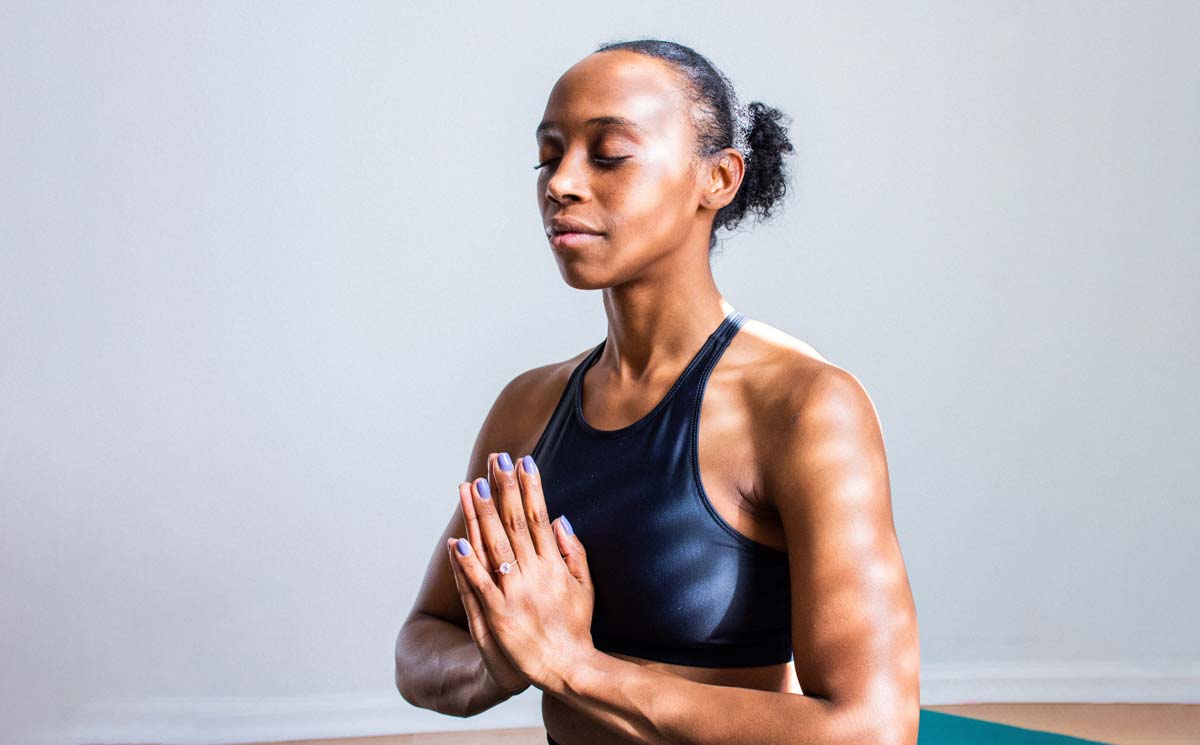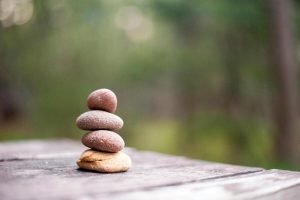Last updated on October 29, 2020
In the midst of a global pandemic, we’re all living in potentially stressful times. We’re seeing economic and social changes all over the world, while being expected to function at optimal levels at our jobs, maintain a social life, and care for our families. Seems like quite a tall order, does it not?
The answer lies in practicing equanimity.
Equanimity is defined as evenness of mind, especially during stressful times; a mental calmness and composure in a difficult or uncertain situation.
What I Learned From an 80-year-old Buddhist Monk
Years ago, I learned a valuable lesson in equanimity from an 80-year-old Buddhist monk. She was invited to our class to give a lecture on some Buddhist concepts. The class happened to be on the third floor of the building.
For some reason, the building elevator was not working that morning. Everyone present was in a state of panic. Everyone except the monk, that is. She just smiled, said, “This is going to be good for my lungs,” and started climbing the stairs.
What struck me was the ease with which she accepted the situation, found a way to enjoy it, and inspired everyone present by her actions.
This monk embodied Swami Chinmayanand’s definition of an equanimous person. She was “like a breeze that passes by without asking. When the windows are open, it purifies the atmosphere by its mere passing. It changes its direction without hesitation when the door is closed.”
What Exactly is Equanimity?
According to ancient Hindu and Buddhists texts, being equanimous is a perpetual state of non-attachment to external events. This means that the mind does not engage in attachment or aversion to the external events, but is always in a state of acceptance.
At the first glance, this may seem like a state of mental inactivity or apathy. But it is quite the opposite. Practicing equanimity means not being shaken by adversity nor pursuing after happiness. Non-attachment to events gives one the objectivity and wisdom to act in the interest of the greater good. It fosters the creativity to come up with solutions that are inclusive and make the best use of the available resources.
Equanimity in Buddhism
From the Buddhist standpoint being equanimous helps one face the Eight Winds – the eight situations when one can get carried away and cause harm to oneself and others.
The Eight winds are:
- Prosperity
- Decline
- Disgrace
- Honour
- Praise
- Censure
- Suffering
- Pleasure
Notice these are not all negative. Being equanimous helps us to look at these situations for what they really are—impermanent. Equanimity gives us the forbearance and hope that “this too shall pass.” It helps us to avoid despairing over (or becoming overly attached to) something that is actually passing and transient.
Equanimity in Hinduism
The Hindu text, the Bhagavad Gita, describes an equanimous person as someone who has steady wisdom. Just as an ocean does not get agitated when all the rivers flow into it, similarly an equanimous person takes everything in stride and lives life to the fullest, without getting attached. An equanimous person learns from the past, accepts the present, and consciously creates for a better future.
The Benefits of Practicing Equanimity
So, what makes being equanimous important to us? Let me share an example from my own life.
I used to conduct Art Based Therapy sessions at a local shelter for homeless women. On my first day, I heard shocking experiences of the women living there. I returned home extremely disturbed and feeling helpless about my limited ability to help them. I spoke to my teacher and she pointed out that I am letting my emotions affect me and therefore reacting, rather than responding to the situation. She suggested I meditate. As I sat on the mat observing my breath, the mental agitation decreased. I saw the impermanence of the situation. The hurt and trauma of the women was not permanent. It could be healed. The tags society had put were but an impermanent part of the womens’ personality and not their complete identity. My job was to bring their other aspects to light and help them dissociate with these tags. And I could only do this if I was equanimous.
On a larger scale, today we are facing a global pandemic, job cuts, economic instability, and the resultant mental health problems. On the one hand, we have the choice of getting into a blame game, acting out of anger, despair, and fear. On the other hand, we have the choice to be equanimous—to view the situation objectively, accept it with patience, and find and create small joys to get through it.
How to Cultivate Equanimity
The choice to be equanimous is a conscious practice—one that requires relentless and complete commitment. The best part is that we can have fun doing it.
To cultivate equanimity, you must learn to practice being an observer to your own thoughts. Yoga terms this as Sakshi Bhava or Witness Behaviour. Here, we are practicing being a witness and withholding our urge to react to our thoughts. As we become proficient in the practice, we learn to respond rather than react to situations. Our actions are well thought out and deliberate. Then we act from a place of wisdom, courage, and compassion; not from a place of fear and lack.
Being mindful of the three errors of perception is also a great way to cultivate equanimity. Here are the three errors.
- We see permanence where there is impermanence
- We see whole where there are parts
- We see independence where there is dependence
Equanimity Meditation and Other Ways to Practice Equanimity
Meditating on the errors of perception shared above makes it easier to be unaffected by every incident around us.
Mindfulness meditation does not need to be complicated. The simplest one which always works for me is taking time out, counting backwards from 100-0 and then resuming whatever it is that I am doing.
If you would like a guided equanimity meditation, you can watch the video below.
Here is another, longer equanimity meditation video from Buddhist teacher, Jack Kornfield.
If you find meditation difficult, keeping a gratitude journal is another great way to counter the fear, anxiety and negativity and create a balance in your outlook.
I encourage you to try any or all the above-mentioned techniques, or try an equanimity meditation script like this one. If you have your own methods for cultivating and practicing equanimity, do share them with us.
Most important is to be compassionate with yourself and others as you work on cultivating equanimity. After all, we are in this together—creating balance and harmony one life at a time.

Harshada Khanolkar
You can connect with Harshada on Instagram (@harshadaslifecoaching) and LinkedIn.









Be First to Comment